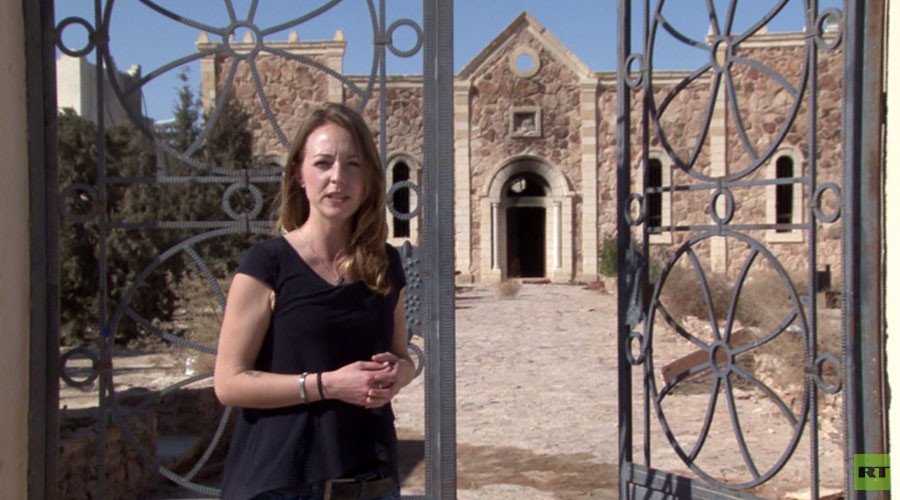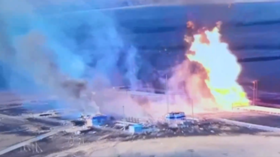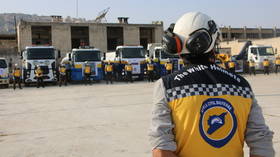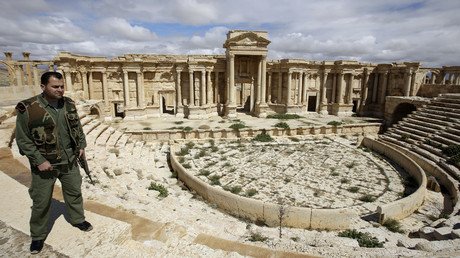Churches burnt, cemeteries desecrated: RT visits liberated town of Al-Qaryatayn, Syria
After several days of heavy assault fighting, Syrian government troops and local militia have retaken the town of Al-Qaryatayn from Islamic State. As RT’s Lizzie Phelan traveled there, she found a devastated place.
Al-Qaryatayn had been held by terrorist groups since late August. The liberation of the city proclaimed April 3 came days after Islamic State (IS, formerly ISIS/ISIL) was pushed out of the ancient city of Palmyra, 100km (60 miles) to the east.
Syrian forces retake strategic Christian town of al-Qaryatain https://t.co/EzRfnaH1Yppic.twitter.com/WSMwn8ySSC
— RT (@RT_com) April 4, 2016
The army expects Al-Qaryatayn to serve as a springboard for further advances against IS strongholds in eastern Syria.
“Al-Qaryatayn is at a junction that connects the Iraqi border with Palmyra and from Palmyra through to Damascus,” Ahmad Albuhamad, first lieutenant in the Tribesmen regiment, an ally of the Syrian Arab Army (SAA), explained to RT.

With the ancient city of Palmyra now retaken, pro-government forces are pressing ahead with their campaign to cut off IS supply routes through the oil and gas-rich desert around the city, Phelan reports.
Al-Qaryatayn looks totally deserted - no sign of the hundreds who IS reportedly kidnapped there.
A fighter from a local tribe said the citizens were moved out long ago - to Raqqa, the de facto IS capital, where the terrorist group is most heavily entrenched.
“Most information shows that the kidnapped Christians from Al-Qaryatayn were taken to an ISIS prison under the Batath Dam [22km upstream from the city of Raqqa]. They put them under the dam to avoid being targeted by Russian and Syrian aircraft,” Ahmad Albuhamad said.
Al-Qaryatayn used to have a large Christian population. Now the signs of IS persecution are quite visible.
The jihadists apparently used a bulldozer to partially destroy St Elias Monastery, which dates back more than 1,500 years. Human bones from ancient graves are strewed amidst the rubble.
Inside the monastery there is an Assyrian church and all Christian symbols in it have been destroyed. In the church graveyard, the gravestones have been trashed and all the crosses removed.
Thankfully, the monastery’s beautiful old church is still standing, but has been severely desecrated. After an apparent attempt to set the building on fire from inside, the old beams look burnt and the floor is covered with burnt pages with texts in Assyrian from Christian holy books.
RT’s crew reports many Assyrian churches in the area have been either demolished or badly damaged.
There is not one building left in Al-Qaryatayn that has escaped damage from the fighting.
In the meantime Syrian forces, with the help of Russian sappers, are working to de-mine the city of Palmyra, the taking of which is being held up as both a strategic and symbolic win in the battle against the jihadists.
After IS seized Palmyra last May, they not only demolished objects of world heritage, but rigged the entire ancient city with explosives, leaving behind thousands of mines before their retreat.
#ISIS had 3,000 bombs rigged, ready to level entire #Palmyra city with one click https://t.co/bhbCPlYgIypic.twitter.com/CQryvaNnOb
— RT (@RT_com) April 3, 2016
Russian mine clearance specialists are now scanning the ancient complex in search of explosives. Over 100 mines have already been defused.














